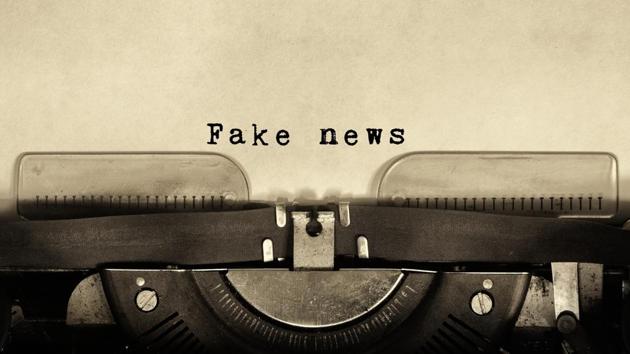To check fake news, journalists must tell the truth without fear
The best way to regulate the menace of fake news is not through executive orders but by encouraging true journalistic values of credibility, integrity and independence within newsrooms across India
Smriti Irani has an uncanny knack of giving back as good as she gets. Last month, in Parliament’s central hall as her fellow-MPs gathered around to wish her on her birthday, I too stepped up with a slightly mischievous smile: ‘Happy birthday ma’am. I won’t of course ask your age today!’ Pat came the reply: ‘Thanks, but don’t worry, I am 42 today. Unlike journalists, I have nothing to hide!’

The sharp-witted response was typical Smriti Irani: a talented and charismatic politician but now seen as an increasingly polarising figure. As a BJP spokesperson, her punchy sound bites made her a much-sought-after leader, her persona as a big star on the small screen attracting instant eyeballs and crowds. She is even being projected as a potential rival to Congress president Rahul Gandhi in Amethi next year. As a minister, though, first in HRD and now in the information and broadcasting ministry, the very qualities that made her stand out once are now seen as her weakness: effective ministers, after all, are expected to be nuts and bolts administrators first. Their role is often one of conciliators and bridge-builders, not of confrontational and divisive political warriors.
Take the most recent controversy over a ‘fake news’ circular giving the I&B ministry the power to instantly and arbitrarily suspend a journalist’s accreditation on receiving a complaint. That the circular had to be withdrawn within 24 hours following the intervention of the prime minister’s office only reflects how a unilateral decision taken without due consultation with stakeholders can only end up embarrassing a seemingly all-powerful government that otherwise rarely owns up to its mistakes.
It isn’t as if ‘fake news’ isn’t a major editorial, technological and ethical challenge or that Irani shouldn’t kick-start a meaningful dialogue on the issue. The key question is: does the government come into the debate with clean hands? This, after all, is a regime which has made every attempt to build an unrelenting propaganda juggernaut with the mushrooming of Right-wing websites, openly aligned television channels and a cacophonous social media presence that seeks to virtually intimidate any dissenting voice into submission. When ministers spread falsehoods, follow abusive twitter handles or defend toxic websites that are consciously spreading communal hatred, then they surely lose the moral high ground to determine what constitutes ‘fake news’.
Irani is, in a sense, only following the not so glorious tradition of many of her predecessors in Shastri Bhavan, for whom the I&B ministry was designed to control the media. It started with the Emergency in 1975 with VC Shukla, a minister who achieved notoriety with his ruthless clampdown on the media under Indira Gandhi and her son Sanjay’s explicit instructions. Since then, almost every I&B minister, with a few notable exceptions, have sought to manipulate the media narrative: I&B could well be re-branded P&P, propaganda and publicity in the service of the ruling class.
However, there is a crucial difference between 1975 and now. Then, the media universe was limited to a few major national and regional newspapers: there was no private television, no Internet and no social media. Now, the media ‘jungle’ is a free for all carnivorous ecosystem which is quite impossible to police. For example, does anyone seriously believe that gigantic data-devouring beasts like Twitter or Facebook can be controlled by a surveillance State monitoring millions of tweets and posts every hour? An open source media platform empowers lakhs of potential citizen journalists, with mobile technology blurring the lines between news and fake news in the shortest and fastest possible time.
Regulating this maddening news space is beyond the scope of any individual or government, howsoever mighty. The best way forward, therefore, is not through executive firmans but by encouraging true journalistic values of credibility, integrity and independence within newsrooms. Maybe, we journalists need to introspect and ask why we have become such soft targets in a polarised polity. Maybe we need to name and shame those who are serial offenders and deliberately and constantly manufacturing noise as news. Maybe we need to have the self-respect and moral authority to show the mirror to those who label us as paid media and presstitutes. Maybe we just need to reclaim the space that allows us to tell the truth to power without fear or favour. Because if we don’t, we won’t have anyone to blame but ourselves when the State comes knocking on our doors the next time.
Post-script: The first recorded instance of fake news stretches back in time to the Mahabharata: remember, how Krishna forces the honest Yudhisthira to lie to Guru Dronacharya on the death of his son Ashwathama? Wonder what punishment would be meted out by today’s rulers to Krishna for deliberate misinformation!
Rajdeep Sardesai is a senior journalist and author
The views expressed are personal






